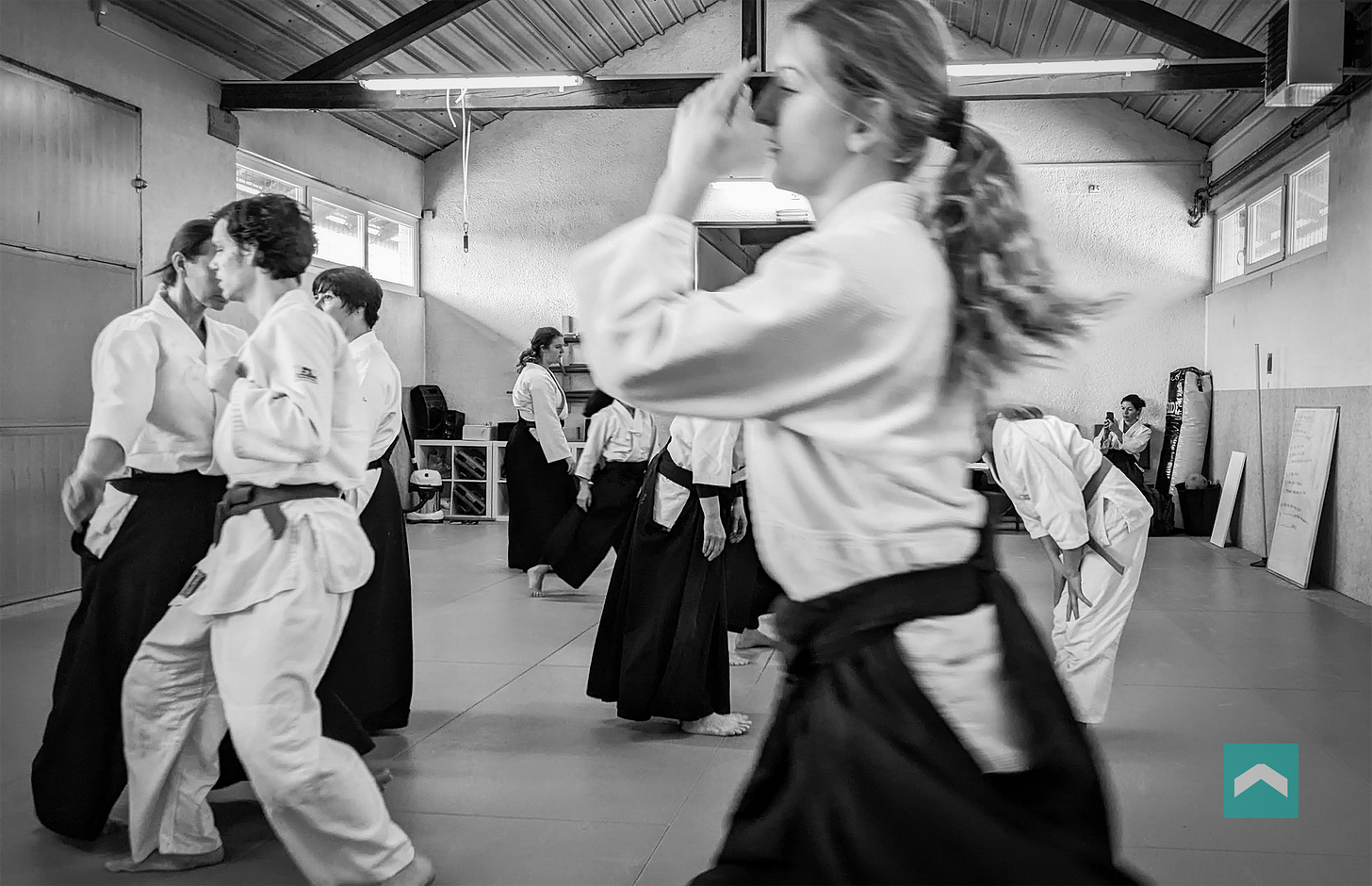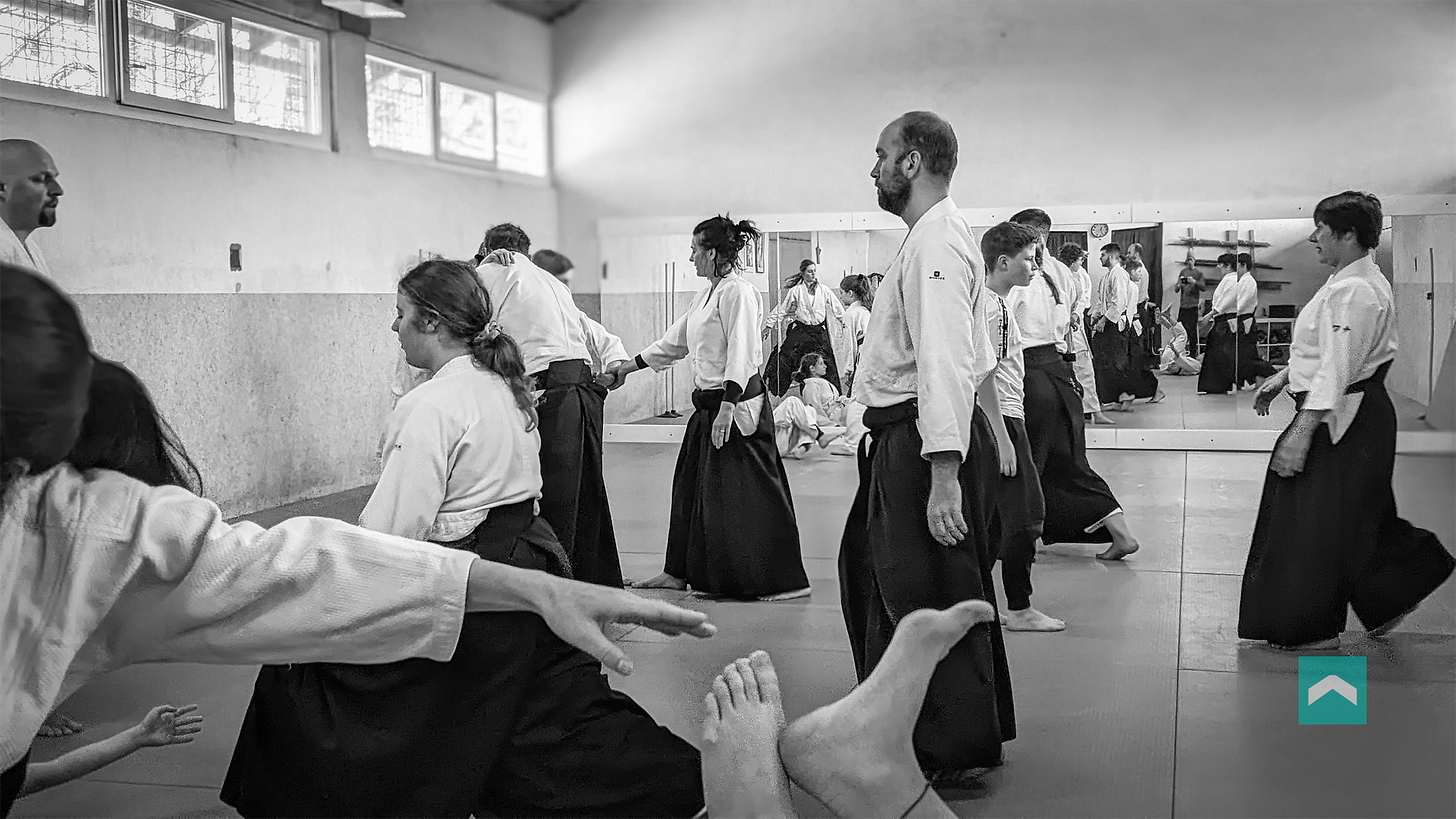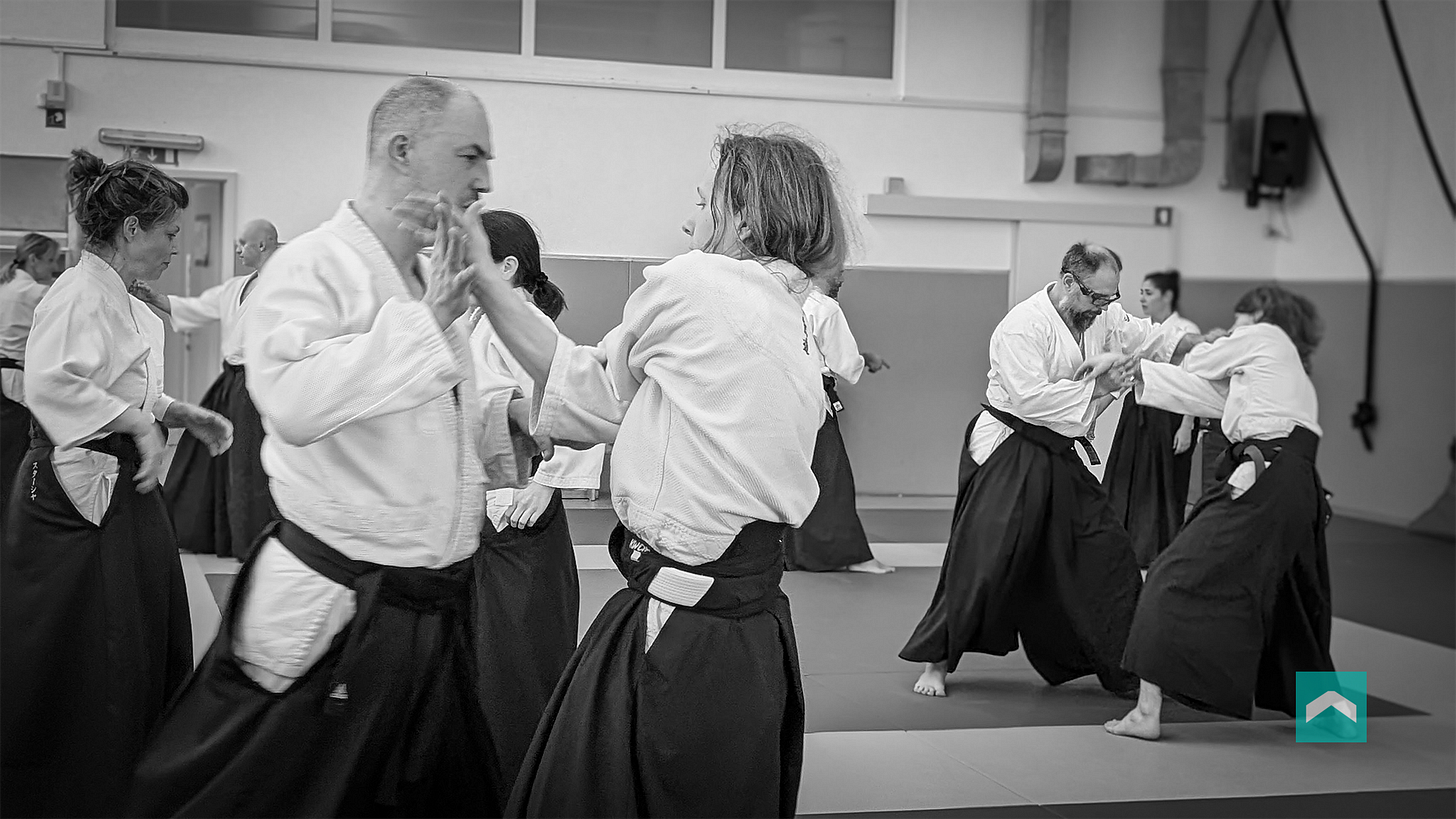What draws people to Aikido beyond techniques, ranks, or affiliation
What people are really seeking when they step on the Aikido mat and why the online debates miss the point entirely
Most Aikido debates online obsess over one thing: can you use it in a real fight? From personal experience, I can say that completely misses the point. In fact, for me, it was the exact opposite. Aikido taught me how not to fight.
In my twenties, I kept finding myself in conflict. I attracted tension and confrontation like a magnet. I still don’t fully understand why, but that storm faded the moment I started training. The more I practiced, the less conflict found me. It didn’t make me soft or passive — it gave me something steadier to stand on. A different way to move through the world.
The way I see it, using Aikido for fighting is like trying to use a kitchen knife as a screwdriver. It might work once in a while, but more often it slips, cuts, or simply isn’t the right tool for the job.
Which brings me back to a question that’s been with me for years — why do people really practice Aikido? Why do I?
In my dojo, we rarely talk about it directly, but there's an unspoken understanding — we really enjoy training. Enough to sweat like crazy in 35°C heat. After 25 years of practice, conversations with fellow Aikidoka, reading hundreds of online threads and applying scientific methods to process them, I now see a pattern. People who stick with Aikido over the long run aren’t moved by what they say they want. They might talk about recreation, socializing, or philosophy. But underneath that, Aikido is a tool they use for something else entirely.
Here’s what people are really seeking when they step on the mat.
It’s not about practicality, but it is practical
“I want to stop being clumsy”
A surprising number of people come to Aikido because they’re tired of bumping into things, misjudging space, or simply feeling awkward in their own skin. They want to move better, fall without fear, and stop feeling like their body is an unpredictable object they have to drag around all day.
Aikido offers something rare: body confidence without performance pressure. You’re not training for medals, status or applause. You’re learning how to be in your body, how to organize yourself in space, and how to respond to the unexpected without panic.
One student told me, “I tripped down a flight of stairs and just rolled out of it.” No injury. I’ve fallen off my bike many times and never got hurt. That’s years of ukemi. The body learns how to fall and get up without panic.
“I need my body to feel good again”
Aikido is one of the few physical practices that rewards sensitivity over force. You don’t have to push through pain or exhaust yourself to improve. You can grow through curiosity, awareness, and attention to detail.
People who don’t enjoy loud gyms or working out alone often find something different on the mat. Instead of punishing the body with endless reps Aikido brings coordination, balance, and subtle strength into play. And the complexity of the movements keeps your brain and nervous system engaged in a way few other activities can.
You’re not working out. You’re working with yourself.
“I want to handle conflict without becoming the problem”
Conflict happens. At work, in families, on the street. The question isn’t how to avoid it completely, it’s how to stay centered when it arrives.
Some people say Aikido helps with this. And maybe it does, especially if your teacher is good at guiding students through emotional self-regulation, not just physical technique. But for me, it didn’t teach me how to handle conflict better. While it helped me avoid physical confrontation, it didn’t give me the emotional tools to navigate hard conversations or tension at home. That part came later, from elsewhere.
Still, something in the practice keeps this question alive. The exposure to tension, pressure, and contact pushes you to notice how you react. Aikido doesn’t solve conflict, but it might change how you react when it happens.
The emotional archaeology
“It’s my moving meditation”
Some people sit. Others move.
For many of us, traditional seated meditation doesn’t quite land. It’s too still, too empty, too disconnected from the body. Aikido fills that gap — it gives us a way to drop into the present without trying to force the mind to be quiet. You just move. Breathe. React. Flow. And then, somewhere in the middle of a technique, you realize you haven’t thought about your inbox or your problems for a full hour.
From my own experience, there are days when I don’t feel like going to class or teaching. But I’ve never once regretted stepping on the mat. One student put it well: “After class, it’s like someone hit reset on my brain.” It didn’t fix anything, but it cleared the noise and made space to breathe and see things more clearly.
“It’s just genuinely fun”
People forget this part. Aikido is fun.
It’s physical play for grown-ups. You get to roll, move, experiment, and interact in a way that feels alive—not performative, not competitive. Just alive.
There’s laughter, surprising positions, mistakes that lead to discoveries, frustration, too. And for a couple of hours, you’re not a job title or a parent or a decision-maker. You’re just someone learning something new, with others.
In my experience, it’s rare to find a place with clear structure that still welcomes imperfection. Aikido gives me that—a solid form to guide me, and the freedom to experiment, improvise, and belong even when I fail.
The tribe you didn't know you needed
"You find people who share your values"
Aikido attracts a certain kind of person. Not always talkative. Not always easy to categorize. But there’s often an unspoken alignment. A desire for harmony over dominance. Presence over performance. Growth over glory.
The dojo offers a kind of community that doesn’t require small talk. You don’t need to explain why you’re there. You just train. And over time, connections form — through shared effort, bruises, and respectful etiquette. One student said, “I love the atmosphere of the dojo — it’s a very positive space.”
For me, it's not about friendship in the usual sense. It's about sharing space with people who keep showing up — trying, learning, forgetting, and doing it all over again. That silent commitment creates a bond that's hard to explain but easy to feel.
Final thoughts
After more than two decades on the mat, here’s what I’ve come to see:
For most practitioners, aikido is never really about fighting or martial prowess, but about something more subtle, and personal. It's about shifting the question from "What can I do to someone?" to "What can I do with someone?" and that changes everything.
What keeps me coming back is the joy of navigating Aikido’s unique movement vocabulary, with all its demands on attention, coordination, feeling, and adaptive thinking. It’s that elusive 'flow' that sometimes appears just as you're pushing physical limits in a hot dojo. It's the lasting satisfaction of a deep physiological reset, and the kind of resilience built not from chasing wins, but from meeting Aikido’s unusual demands — movement that requires full attention, physical awareness, and constant adjustment in response to another person, like a conversation carried out through the body.
Aikido, for me and for many I’ve trained with, is the ongoing, chosen path to a different kind of self-mastery — one grounded in internal peace and a better understanding of how to move through life, harmoniously.
Beneath that, I’ve come to recognize deeper motivations that often go unstated: a desire for routine, structure, or discipline, the need for acceptance and belonging, the search for meaning or personal growth, or simply the human wish for someone to learn from and lean on. These aren’t just my reflections, they echo across stories and conversations, and are supported by scientific research.
If you already practice, I’d love to hear what keeps you coming back. If you don’t — is there something in your life that works like Aikido?







This article is so spot on, thank you. I was first drawn to Aikido in my early twenties out of intellectual curiosity - what is this martial art that is about conflict resolution? I stayed with it because from the very first class, I left in this grounded state in which things and people who would annoy me or cause me anxiety just didn't bother me any more. Aikido to me was like mental and emotional medicine. I realized within the first few months that Aikido was something I wanted to do for the rest of my life. Now that I've been training for more than 40 years, Aikido is in my bones. The neural pathways are built. Now I do Aikido because it is fun. It's a great way to physically connect with people, who are also open, curious, and not particularly competitive. It's also a great way to stay strong, flexible, and coordinated. It has become easier, but it is never "easy". It always requires presence, attention, and a letting go of ego. There is no top to this mountain. The learning and the challenges never stop. The view does keep getting better though!